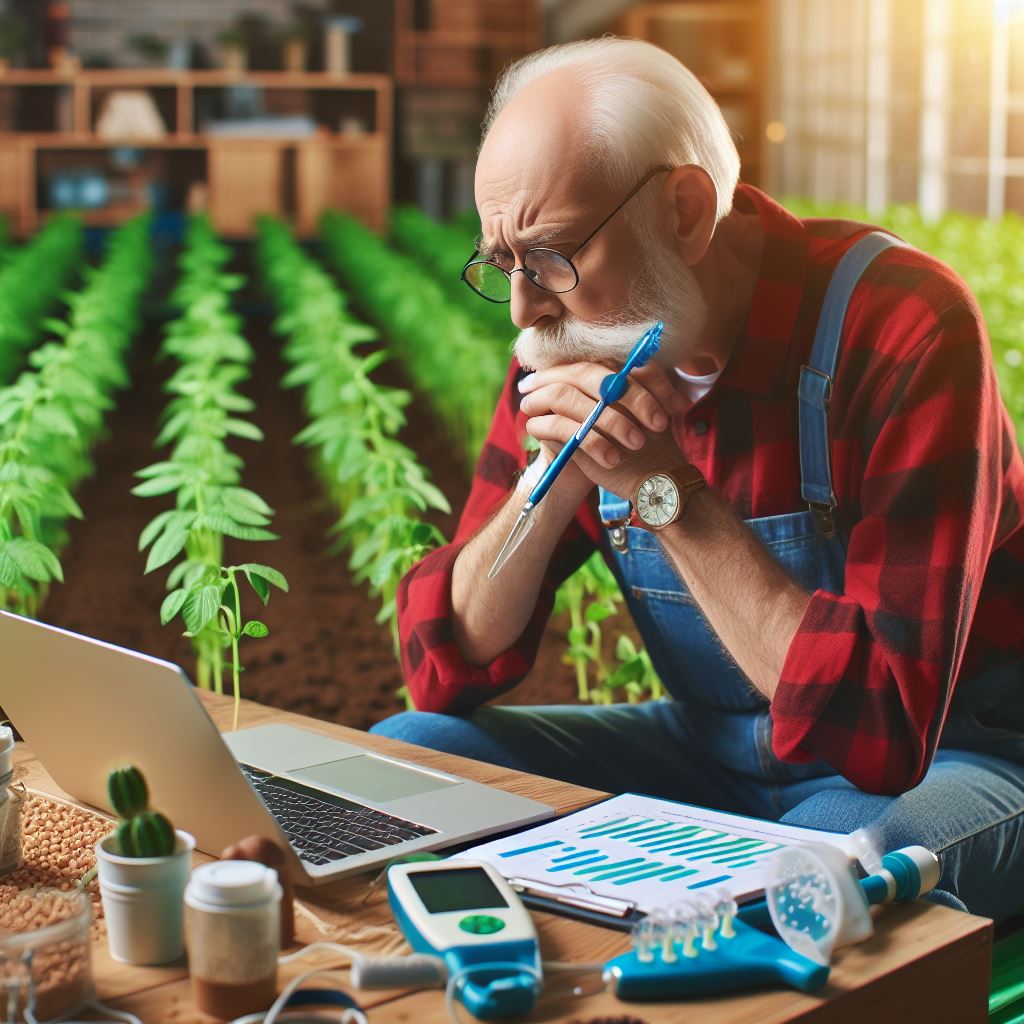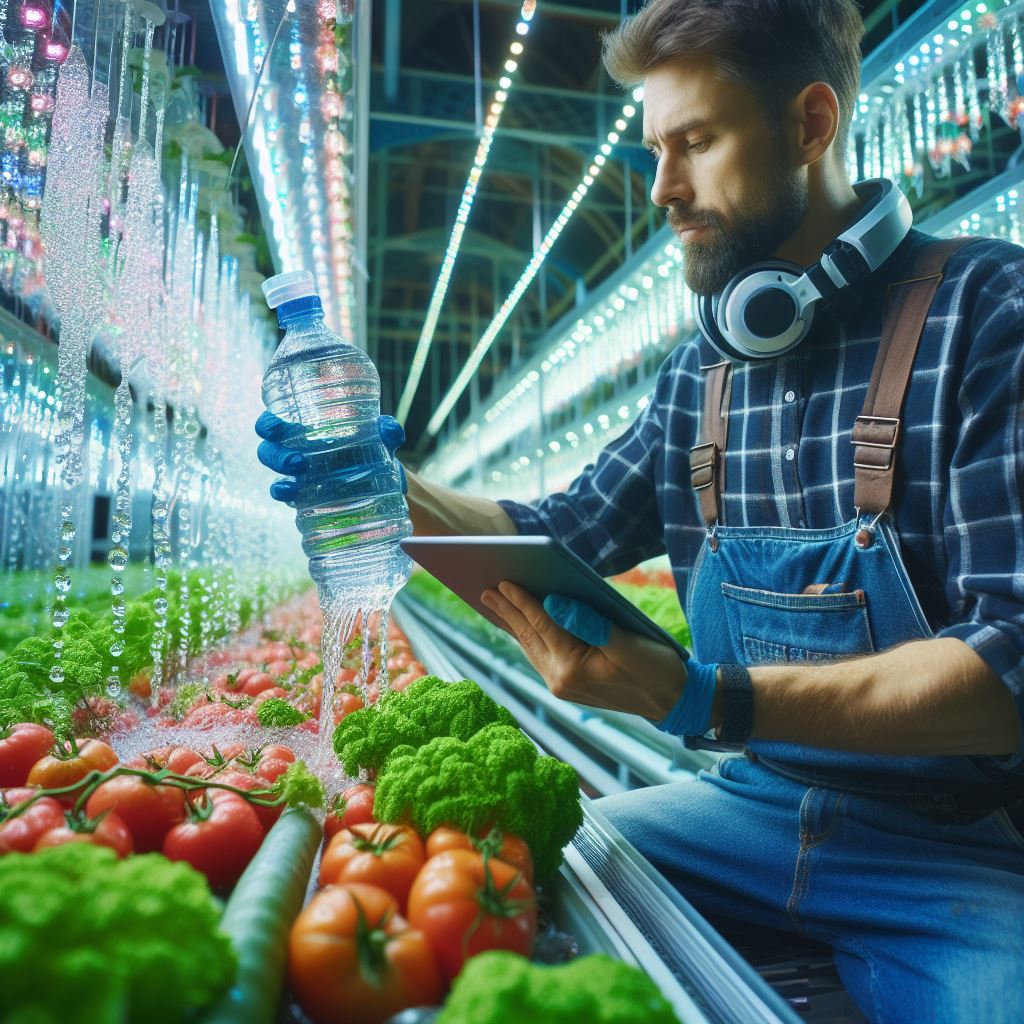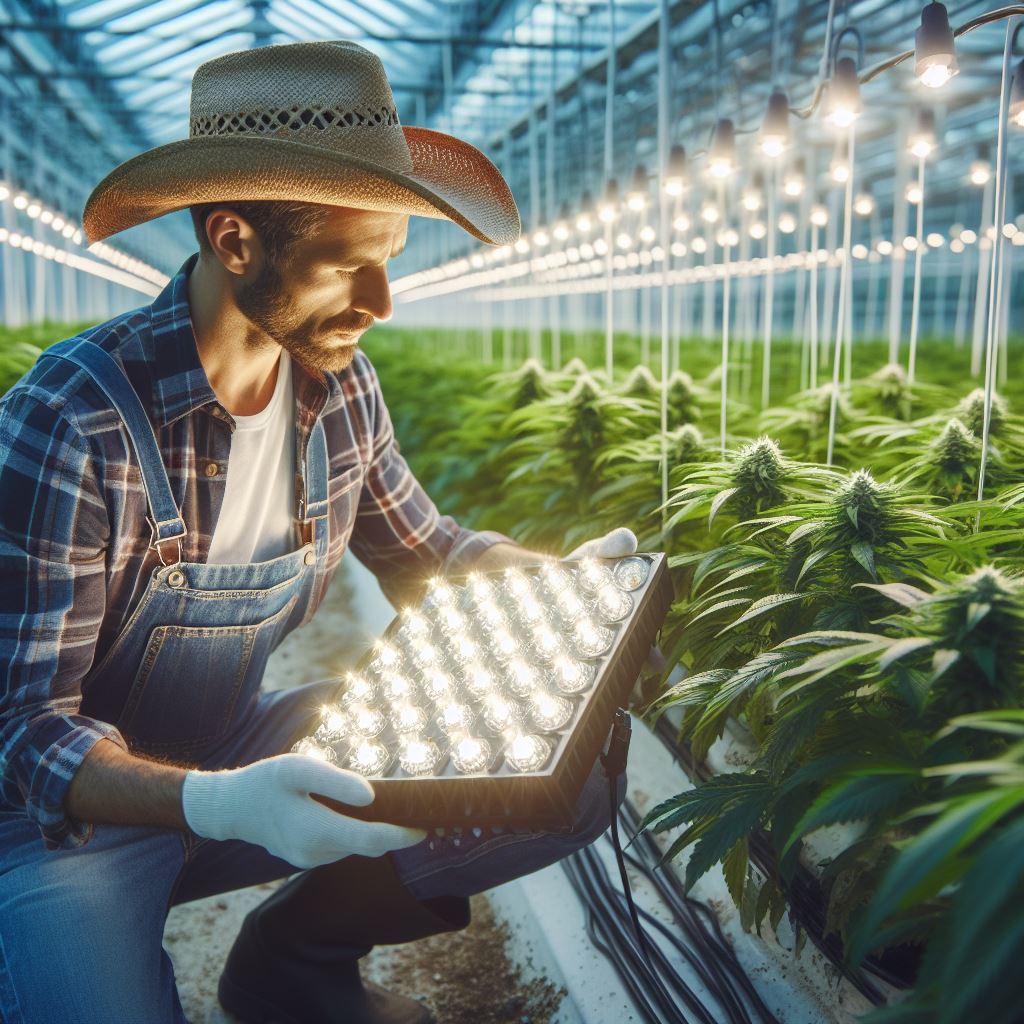Introduction
Crop yields play a vital role in the field of agriculture, ensuring sufficient production to meet the growing global demand for food.
The importance of maximizing crop yields cannot be overstated as it directly impacts food security and sustainability.
Ag Tech, also known as Agricultural Technology, has emerged as a game-changer in improving crop yields.
By harnessing innovative technologies, Ag Tech focuses on enhancing productivity while reducing environmental impact.
This blog post explores the role of Ag Tech in revolutionizing agricultural practices.
Importance of Crop Yields in Agriculture
Crop yields are the measure of agricultural productivity, depicting the quantity of crops harvested per unit of cultivated area.
Higher crop yields are critical for feeding an increasing global population, estimated to reach 9.7 billion by 2050.
Insufficient yields can lead to food shortages, malnutrition, and economic instability.
Increased crop yields provide numerous benefits.
They ensure food security, enabling access to a variety of nutritious food options for communities worldwide.
Moreover, enhanced yields contribute to economic growth by providing income opportunities for farmers, boosting rural development, and reducing poverty levels.
Introduction to Ag Tech and its Role in Improving Crop Yields
Ag Tech encompasses a wide range of technological advancements applied in agriculture.
These include precision farming, genetic engineering, modern irrigation systems, automated machinery, data analytics, and remote sensing.
These innovations empower farmers to make informed decisions, optimize resource allocation, and improve crop yields.
With the help of Ag Tech, farmers can adopt precision farming techniques that analyze soil conditions, weather patterns, and crop health to optimize resource utilization.
Transform Your Agribusiness
Unlock your farm's potential with expert advice tailored to your needs. Get actionable steps that drive real results.
Get StartedGenetic engineering facilitates the development of genetically modified crops resistant to pests, diseases, or adverse weather conditions.
Furthermore, Ag Tech enables the efficient use of resources like water and fertilizers through modern irrigation systems, reducing waste and environmental impact.
Automated machinery simplifies labor-intensive tasks, ensuring accuracy and increasing efficiency.
Basically, Ag Tech plays a pivotal role in enhancing crop yields, addressing global food security concerns, and advancing sustainable agricultural practices.
Overview of Ag Tech
Definition of Ag Tech
Ag Tech, short for Agricultural Technology, refers to the use of various advanced technologies in the field of agriculture.
Various technologies used in agriculture
- Precision farming: Utilizes GPS and remote sensing to optimize agricultural practices.
- Robotics: Helps automate tasks such as planting, irrigation, and harvesting.
- Drones: Provide aerial monitoring, crop analysis, and pest control.
- Biotechnology: Involves genetic modification to enhance crop traits and resistance to diseases.
- Internet of Things (IoT): Enables real-time monitoring of crop conditions and equipment.
- Artificial Intelligence (AI): Assists in data analysis, crop prediction, and decision-making.
Role of Ag Tech in modern farming practices
Ag Tech plays a crucial role in revolutionizing modern farming practices and improving crop yields.
- Increased Efficiency: With the help of precision farming techniques, farmers can optimize the use of resources like water, fertilizers and pesticides. This leads to a more sustainable and efficient agricultural system.
- Enhanced Productivity: Robotic systems automate repetitive tasks, reducing labor requirements and increasing productivity. These robots can work day and night, ensuring timely operations.
- Improved Crop Monitoring: Drones equipped with high-resolution cameras and sensors enable farmers to monitor crop health, identify pest infestations, and detect nutrient deficiencies at an early stage.
- Disease and Pest Management: Ag Tech helps in early detection of diseases and pests through advanced monitoring systems. This enables farmers to take proactive measures and reduce crop losses.
- Precision Application of Inputs: By utilizing IoT and AI, farmers can precisely apply fertilizers, pesticides, and water only where needed, minimizing waste and environmental impact.
- Crop Improvement: Biotechnology enables the development of genetically modified crops that are resistant to pests, diseases, and extreme weather conditions. This leads to improved yields and quality.
- Data-Driven Decision Making: Ag Tech generates vast amounts of data on weather patterns, soil conditions, crop growth, and more. This data can be analyzed to make informed decisions and optimize farming practices.
- Sustainable Agriculture: With the implementation of Ag Tech, farmers can adopt sustainable practices that reduce the use of harmful chemicals, conserve resources, and protect the environment.
Generally, Ag Tech offers a wide range of advanced technologies that are transforming the agricultural industry.
By leveraging these technologies, farmers can improve crop yields, optimize resource usage, and practice sustainable farming.
Read: Top 5 Trends in Vertical Farming Tech
Current Challenges in Crop Yields
In order to improve crop yields, it is important to understand the current challenges facing agriculture.
Factors Affecting Crop Yields
- Inadequate water supply leads to drought, limiting the amount of water available for irrigation.
- Extreme temperatures, such as heatwaves or cold spells, can harm crops and reduce yields.
- Poor soil conditions, including low fertility or contamination, affect plant growth and development.
- Limited access or high costs of fertilizers, pesticides, and herbicides can hinder crop yield potential.
- Lack of advanced farming techniques and technologies restricts crop productivity.
Climate Change and its Impact on Agriculture
- Changes in rainfall patterns and increased frequency of droughts or floods affect crop growth.
- Higher temperatures and increased heatwaves speed up crop maturation, reducing yields.
- Shifts in pest and disease patterns due to climate change can devastate crops.
- Unpredictable weather events decrease farmers’ ability to plan and optimize their farming practices.
- Rising sea levels can lead to saltwater intrusion into coastal farmlands, rendering them unusable.
Soil Quality and Nutrient Management
- Poor soil fertility deprives crops of essential nutrients, impacting growth and yield potential.
- Soil erosion due to wind or water can destroy topsoil and reduce its ability to support crops.
- Overuse of chemical fertilizers and improper nutrient management can lead to nutrient imbalances.
- Soil compaction restricts root growth and impedes nutrient and water uptake by crops.
- Lack of organic matter and microbial activity in the soil degrades its overall quality.
These challenges highlight the need for innovative approaches and technologies to improve crop yields.
By addressing factors such as water scarcity, climate change, pests, and soil management, farmers can enhance their productivity and mitigate risks.
Implementing precision agriculture techniques, like using sensors and drones, enables farmers to monitor and optimize crop growth.
Furthermore, adopting sustainable farming practices, including crop rotation and integrated pest management, reduces reliance on external inputs.
Investing in research and development of genetically modified crops can also help overcome yield limitations.
Overall, integrating advanced technologies and sustainable practices is crucial to improve crop yields and ensure food security for a growing population.
Read: Soil Health Monitoring: New Tech Trends
How Ag Tech is Improving Crop Yields
Precision Farming Techniques and Tools
Precision farming, through the use of advanced technology, has significantly improved crop yields.
Farmers can now optimize inputs, such as water, fertilizers, and pesticides, to match the specific needs of their crops.
By collecting data from sensors and monitoring tools, farmers can precisely analyze soil conditions, crop health, and weather patterns.
This information allows them to make informed decisions and take appropriate actions to improve productivity.
With the help of precision agriculture techniques, farmers can target problem areas within their fields, such as nutrient deficiencies or pest infestations.
By addressing these issues promptly, farmers can minimize yield losses and maximize production.
GPS and Remote Sensing Technologies
Remote sensing and GPS technologies have revolutionized the way farmers manage their crops.
Showcase Your Farming Business
Publish your professional farming services profile on our blog for a one-time fee of $200 and reach a dedicated audience of farmers and agribusiness owners.
Publish Your ProfileGPS enables precise navigation and mapping of fields, ensuring accurate application of inputs.
Remote sensing techniques, such as satellite imagery and aerial drones, provide farmers with real-time data on crop health and growth.
This information enables early detection of stressors, allowing farmers to take corrective measures promptly.
By leveraging GPS and remote sensing technologies, farmers can identify variations in crop performance across their fields.
This knowledge helps them optimize resource allocation and implement precise management strategies.
Variable-Rate Technology and Site-Specific Management
Variable-rate technology (VRT) allows farmers to adjust input applications based on site-specific requirements.
VRT utilizes data-driven prescriptions to optimize fertilizer and pesticide application according to the unique needs of each crop area.
By mapping variations in soil fertility and vegetation, VRT enables farmers to apply inputs at the right time and in the right amount.
This approach reduces waste and enhances crop health, leading to increased yields.
Site-specific management (SSM) further complements VRT by tailoring agronomic practices to specific field characteristics.
By considering factors like topography, soil type, and historical yield data, farmers can implement customized strategies for each area within their fields.
Drones for Crop Monitoring
Unmanned aerial vehicles (UAVs), commonly known as drones, have emerged as valuable tools for crop monitoring.
Equipped with high-resolution cameras and sensors, drones provide farmers with detailed, bird’s-eye-view imagery of their fields.
By collecting data on plant health, water stress, nutrient deficiencies, and pest infestations, drones enable quick and accurate analysis of crop conditions.
This information helps farmers identify challenges and make proactive decisions to mitigate yield losses.
Drones also assist in the identification of crop areas affected by damage caused by weather events or disease outbreaks.
By pinpointing these areas, farmers can take immediate action to prevent further spread and minimize the impact on overall yields.
Data Analytics and Predictive Modeling
Data analytics and predictive modeling play a vital role in improving crop yields.
By analyzing vast amounts of data collected from various sources, farmers can identify trends, patterns, and correlations.
This analysis allows farmers to make evidence-based decisions about crop management practices, planting strategies, and resource allocation.
By leveraging predictive modeling, farmers can also anticipate potential challenges and plan appropriate interventions to optimize yields.
Data analytics and predictive modeling enable farmers to continuously optimize their farming practices based on real-time information and historical data.
This iterative improvement process leads to increased crop productivity and profitability.
Essentially, Ag Tech has significantly improved crop yields through precision farming techniques, GPS and remote sensing technologies, variable-rate technology, drones for crop monitoring, and data analytics.
These advancements enable farmers to make informed decisions, prevent yield losses, and maximize production.
With continual advancements in Ag Tech, the future holds even greater possibilities for enhancing crop yields and feeding a growing global population.
Read: Sustainable Farming via Tech Innovations

Advanced Irrigation Systems
Water management is crucial for maximizing crop yields and ensuring sustainable agriculture.
Importance of Water Management
- Efficient water usage minimizes wastage, reduces costs, and conserves natural resources.
- Proper water management improves plant health, growth, and productivity.
- Water scarcity and unpredictable weather patterns necessitate smart irrigation systems.
Smart Irrigation Systems
Utilizing advanced technologies, smart irrigation systems offer significant benefits to farmers.
- These systems use sensors to measure soil moisture levels, weather conditions, and plant needs.
- Real-time data analysis enables precise water delivery, preventing both over- and underwatering.
- Automated control systems adjust irrigation schedules based on environmental factors, ensuring optimized irrigation.
- Drip irrigation, a popular smart system, delivers precise amounts of water directly to plant roots, minimizing waste.
Automated Fertigation Systems
Fertigation, the combination of fertilization and irrigation, maximizes nutrient absorption and crop health.
- Automated fertigation systems inject fertilizers into irrigation water, ensuring accurate nutrient distribution.
- These systems not only save time but also improve nutrient utilization and reduce fertilizer waste.
- Farmers can customize fertilizer applications based on plant growth stages and nutrient requirements.
- Smart monitoring technologies provide real-time data on nutrient levels, enabling precise adjustments and preventing deficiencies.
Sensor-Based Irrigation Scheduling
Sensor-based irrigation scheduling helps farmers make informed decisions regarding water application.
- Soil moisture sensors improve water-use efficiency by indicating when irrigation is necessary.
- Weather sensors provide data on temperature, humidity, and evapotranspiration rates, allowing accurate irrigation planning.
- Leaf sensors measure plant water stress, guiding farmers in applying irrigation at the right time.
- These sensors enable farmers to reduce water wastage while maintaining optimal soil moisture levels for crop growth.
In general , advanced irrigation systems play a vital role in improving crop yields and ensuring sustainable agriculture practices.
Effective water management through smart irrigation systems, automated fertigation, and sensor-based irrigation scheduling enhances plant health, reduces water waste, and maximizes productivity.
By adopting these technologies, farmers can optimize their water usage, conserve natural resources, and contribute to a more sustainable and profitable agricultural industry.
Read: Climate Smart Agri: Tools & Techniques
Genetic Engineering and Seed Technologies
When it comes to improving crop yields, genetic engineering and seed technologies play a crucial role in revolutionizing agriculture.
These advancements are not only beneficial but also vital in ensuring food security and sustainable farming practices.
Benefits of Genetically Modified Crops
- Genetically modified (GM) crops have the potential to address various agricultural challenges.
- They can enhance nutritional value, flavor, and shelf life, making crops more marketable.
- GM crops are engineered to be herbicide and pest resistant, reducing the need for chemical sprays.
- By reducing crop loss due to pests and weeds, farmers can achieve higher yields.
- They also have a positive environmental impact by minimizing soil erosion and water pollution.
Enhancing Crop Resilience and Disease Resistance
Diseases and unpredictable weather patterns can devastate crops, leading to food scarcity and economic instability.
Genetic engineering and seed technologies provide solutions to improve crop resilience and disease resistance.
- Scientists can modify plant DNA to enhance resistance against pathogens and pests.
- By introducing genes from other organisms, crops can acquire natural defense mechanisms.
- Genetic engineering enables crops to withstand adverse environmental conditions like heat, drought, and salinity.
- Improved disease resistance means reduced reliance on chemical pesticides, promoting sustainable farming.
- These advancements also enable crops to thrive in regions previously unsuitable for agriculture.
Innovation in Seed Technologies for Higher Yields
Seed technologies have experienced remarkable advancements, directly influencing crop yields and agricultural productivity.
Showcase Your Farming Business
Publish your professional farming services profile on our blog for a one-time fee of $200 and reach a dedicated audience of farmers and agribusiness owners.
Publish Your Profile- Seed treatment technologies protect seeds from diseases and pests.
- Improved seed varieties ensure higher germination rates and better crop establishment.
- Genomic selection and marker-assisted breeding accelerate the development of superior crop traits.
- Seed priming techniques enhance seed performance and improve seedling vigor.
- Precision planting technologies optimize seed placement, enabling efficient nutrient uptake.
Moreover, the advent of digital tools and data analytics allows farmers to make data-driven decisions and optimize their farming practices.
In essence, genetic engineering and seed technologies have revolutionized agriculture, contributing to increased crop yields and sustainable farming practices.
The benefits of genetically modified crops are numerous, including improved nutritional value, reduced pesticide use, and positive environmental impacts.
Additionally, advancements in crop resilience and disease resistance ensure farmers can combat agricultural challenges effectively.
Innovation in seed technologies, such as seed treatment and precision planting, further enhances productivity.
By embracing these technologies, we can ensure food security, elevate farmers’ livelihoods, and protect the environment.
Uncover the Details: Biotech in Agriculture: A Modern Twist
Robotics and Automation in Agriculture
Robots have revolutionized the way we approach agricultural operations, leading to increased crop yields and efficiency.
Here, we will delve into the role of robots in agriculture, automated planting and harvesting systems, and how robotics contribute to weed control and crop protection.
Role of Robots in Agricultural Operations
- Precision Farming: Robots equipped with sensors and cameras can collect data on soil health, moisture levels, and crop growth, allowing farmers to make informed decisions.
- Monitoring and Surveillance: Drones and autonomous robots can monitor large fields, detecting disease outbreaks, pest infestations, and even providing real-time heat maps to optimize irrigation.
Automated Planting and Harvesting Systems
- Seed Planting: Advanced robots can precisely sow seeds at optimal depths and intervals, ensuring consistent germination and maximizing crop yield.
- Crop Harvesting: Robots with computer vision systems can identify ripe fruits and vegetables, using delicate arms and grippers to harvest crops without damaging the produce.
- Labor Shortage Solutions: As the agricultural labor force declines, automated systems alleviate the need for manual labor, reducing costs and increasing efficiency.
Robotics for Weed Control and Crop Protection
- Weed Identification and Removal: Robots equipped with artificial intelligence can distinguish between crops and weeds, selectively removing unwanted plants without harming the main crops.
- Precision Spray Systems: Autonomous drones or robots equipped with sprayers can precisely apply herbicides or pesticides only where needed, reducing chemical usage and minimizing environmental impact.
- Crop Disease Detection: Robots with hyperspectral or multispectral imaging capabilities can detect early signs of disease, allowing farmers to intervene promptly, saving entire crops.
- Pollination Assistance: In regions facing a decline in pollinators, robots can step in by using sensors to identify flowers and artificially pollinate crops, ensuring fruitful harvests.
Benefits of Robotics and Automation in Agriculture
- Increased Productivity: With accurate data collection, automated systems optimize water and fertilizer usage, leading to healthier crops with higher yield potential.
- Time and Cost Savings: Robots can perform tasks faster than humans while reducing labor costs, enabling farmers to allocate resources more efficiently.
- Environmental Sustainability: By applying precision techniques, robots minimize chemical usage, reduce waste, and limit negative impacts on ecosystems, ensuring sustainable farming practices.
- Safety and Ergonomics: Robots eliminate the need for physical labor in strenuous and hazardous agricultural tasks, protecting human workers from potential injuries.
- Scalability: Automation systems can adapt to different field conditions and farm sizes, enabling both small-scale and large-scale farmers to benefit from these technologies.
From precision farming to automated planting and harvesting, robotics play a vital role in improving crop yields.
Through targeted weed control and crop protection, robots help farmers battle challenges while promoting environmental sustainability.
With continued advancements, the integration of robots and automation in agriculture will undoubtedly shape the future of farming, ensuring food security and a sustainable planet.
Conclusion
Recap of Ag Tech’s impact on improving crop yields
Ag Tech has proven to be a game-changer in improving crop yields.
Through the use of advanced technologies such as drones and sensors, farmers are now able to monitor their crops more efficiently and make informed decisions.
By using precision agriculture techniques, farmers are able to optimize the use of resources such as water and fertilizers, leading to higher yields and reduced environmental impact.
Ag Tech has also enabled the development of genetically modified crops that are more resistant to pests and diseases.
Importance of continued research and development in Ag Tech
Continued research and development in Ag Tech is crucial to further enhance crop yields.
New innovations and advancements will enable farmers to overcome challenges such as climate change, soil degradation, and unpredictable weather patterns.
Future prospects and challenges in Ag Tech for enhanced crop yields
The future prospects of Ag Tech are promising.
With the development of artificial intelligence and machine learning, we can expect even more precise and efficient farming techniques.
This will not only lead to increased crop yields but also improved sustainability and profitability in agriculture.
However, there are challenges that need to be addressed.
The high costs of implementing Ag Tech systems and the need for proper education and training for farmers are some of the barriers that need to be overcome.
Moreover, data security and privacy concerns need to be addressed to ensure the adoption and success of Ag Tech on a larger scale.
In a nutshell, Ag Tech has revolutionized the agriculture industry, improving crop yields and sustainability.
Continued investment in research and development, along with addressing challenges, will pave the way for a more efficient and productive future in agriculture.




